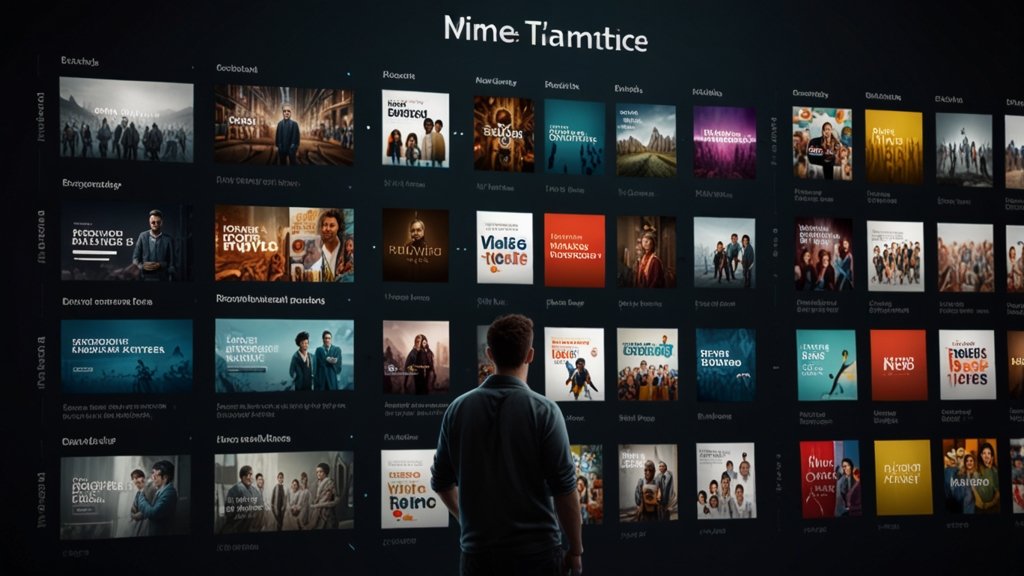Imagine exploring the Amazon rainforest with only one tree’s description. You’d miss the vibrant orchids, hidden creatures, and complex ecosystem interactions. Similarly, approaching any topic with just one narrative is like seeing the world in black and white. your topics | multiple stories unlocks the full spectrum of human experience. This powerful method transforms how we learn, connect, and grow by deliberately seeking diverse perspectives on every subject. For students, professionals, and lifelong learners, weaving multiple stories into your understanding isn’t just helpful—it’s revolutionary.
Consider history. Learning about the Industrial Revolution through factory owners alone paints an incomplete picture. Adding stories of child laborers, inventors, and displaced farmers creates a richer, more truthful tapestry. This approach combats the “single story danger,” where limited narratives breed stereotypes and shallow understanding. Embracing multiple stories fosters critical thinking, empathy, and adaptability—essential skills in our complex world.
Why One Story Falls Short
Relying on a single perspective is like reading only the first chapter of a book. You grasp fragments but miss the whole narrative. Single stories often reflect dominant cultural viewpoints or oversimplified explanations. They ignore marginalized voices and complex realities. Consequently, decisions based on limited narratives can lead to misunderstandings, ineffective solutions, and perpetuated biases. Actively seeking counter-narratives challenges assumptions and reveals hidden truths.
Table: Single Story vs. Multiple Stories Approach
| Aspect | Single Story Approach | Multiple Stories Approach |
|---|---|---|
| Depth of Understanding | Shallow, incomplete | Nuanced, comprehensive |
| Bias Potential | High (reinforces stereotypes) | Reduced (challenges assumptions) |
| Empathy Development | Limited | Significant |
| Problem-Solving | Narrow solutions | Creative, inclusive solutions |
| Engagement Level | Often passive | Active and curious |
The Cognitive Power of Diverse Narratives
Multiple stories supercharge your brain. They force you to compare viewpoints, identify patterns, and synthesize information. This cognitive workout strengthens neural pathways, boosting critical thinking and memory retention. For example, understanding climate change through scientific data, indigenous knowledge, and economic analyses creates a multidimensional mental model. You begin seeing connections invisible in isolated accounts. Moreover, encountering conflicting narratives develops intellectual humility—the awareness that knowledge evolves.
Emotionally, diverse stories build bridges. Hearing a refugee’s personal account alongside policy debates humanizes abstract issues. Similarly, reading novels from different cultures fosters genuine empathy better than statistics alone. This emotional resonance translates into real-world actions: more compassionate leaders, inclusive policies, and communities valuing diverse contributions. Essentially, multiple stories transform abstract concepts into lived experiences.
Transforming Education Through Narrative Diversity
Education thrives on your topics | multiple stories. History classes gain depth by examining events from victors’, victims’, and bystanders’ perspectives. Literature courses comparing adaptations across cultures reveal universal themes and unique interpretations. Even science benefits; learning about genetics through discovery stories, ethical debates, and patient experiences makes abstract concepts tangible. Students engaged this way become active learners, not passive recipients.
Teachers using this method report higher engagement. One history instructor replaced a textbook chapter on colonialism with primary sources: colonists’ letters, indigenous poetry, and trader journals. Students debated motivations and consequences, developing analytical skills beyond memorization. This approach aligns with proven pedagogical strategies like constructivism, where learners build knowledge through diverse experiences.
Table: World War II Through Multiple Lenses
| Perspective | Key Narratives | Insights Gained |
|---|---|---|
| Military Leaders | Battle strategies, resource allocation | Operational challenges, decision-making under stress |
| Civilians (Axis) | Daily survival, propaganda effects, moral dilemmas | Homefront realities, societal control mechanisms |
| Civilians (Allies) | Rationing, war industries, fear of invasion | Collective sacrifice, economic mobilization |
| Resistance Fighters | Covert operations, ideological motivations | Courage in oppression, underground networks |
| Holocaust Survivors | Persecution, loss, resilience | Human rights extremes, trauma’s legacy |
Professional Growth Through Story Integration
Professionals gain immense value from your topics | multiple stories. Marketers analyzing customer journeys through data and personal interviews uncover unmet needs. Healthcare workers combining clinical studies with patient stories provide holistic care. Engineers reviewing both successful projects and failure post-mortems innovate more reliably. Essentially, multiple stories mitigate blind spots in decision-making.
Consider a product design team struggling with user adoption. Initially, they relied on surveys (a single story). After observing elderly users, interviewing single parents, and testing with disabled individuals, they discovered accessibility barriers invisible in aggregate data. Consequently, their redesign included voice controls and simplified interfaces, expanding their market share. This exemplifies how narrative diversity drives innovation and inclusivity.
Building Your Multiple Stories Toolkit
Cultivating this mindset requires deliberate practice. Start by identifying your “go-to” sources—then diversify them. Follow experts with opposing views on social media. Read fiction from unfamiliar cultures. Listen to podcasts featuring firsthand experiences. Additionally, practice “perspective stacking”: when researching a topic, intentionally gather resources representing at least three different viewpoints.
Curate a balanced information diet:
- Academic: Journals, research papers
- Personal: Memoirs, interviews, oral histories
- Cultural: Art, films, literature
- Opposing: Credible sources challenging your assumptions
Ask powerful questions: “Whose voice is missing here?” or “How might someone in a different circumstance view this?” Discussions become richer when you invite diverse contributors and listen more than you speak. Remember, discomfort often signals growth; wrestling with challenging narratives builds intellectual resilience.
Navigating Challenges Skillfully
Information overload is a real barrier. The key is curation, not consumption. Use tools like RSS feeds or curated newsletters (e.g., The Insight or DiverseVoices) to filter quality sources. Confirmation bias tempts us to favor familiar narratives; combat it by scheduling “bias check” sessions where you actively seek disconfirming evidence. Time constraints? Focus depth over breadth; even two contrasting stories on a topic yield richer insights than one.
Another challenge is evaluating source credibility. Equip yourself with media literacy: check author expertise, publication biases, and evidence quality. Cross-reference claims across multiple reputable sources. When encountering emotional narratives, balance them with factual data without dismissing lived experiences. This discernment prevents replacing one narrow story with another.
The Ripple Effects of Narrative Richness
Adopting your topics | multiple stories creates profound personal and societal shifts. Individuals report greater adaptability in careers and relationships. They navigate cultural differences with curiosity rather than judgment. Communities embracing narrative diversity see enhanced collaboration and innovative problem-solving. For instance, cities addressing homelessness combine statistical analysis with homeless individuals’ stories, leading to solutions like “Housing First” programs that actually work.
Globally, this approach fosters intercultural dialogue. Understanding climate change through Pacific Islanders’ lived experiences alongside scientific data fuels collective action. Recognizing historical injustices through multiple accounts enables meaningful reconciliation. Essentially, weaving diverse stories rebuilds fragmented societies, replacing division with shared understanding.
Conclusion:
your topics | multiple stories is more than a learning strategy—it’s a worldview. By rejecting single narratives, you embrace the beautiful complexity of human experience. This practice deepens knowledge, sparks empathy, and ignites continuous growth. Start small: next time you explore a topic, seek one additional perspective. Notice how colors brighten, connections form, and understanding deepens. Your curiosity will build bridges where others see walls. In a world of infinite stories, dare to listen widely. The most transformative truths emerge not from a single voice, but from the chorus.
FAQs
Q1: Can using multiple stories make learning more confusing?
A1: Initially, it might feel overwhelming, but it ultimately creates clarity. Think of assembling a puzzle: more pieces reveal the complete picture. Start with just 2-3 perspectives to build comfort.
Q2: How do I find diverse narratives on technical topics like math?
A2: Explore math’s cultural history (e.g., Islamic contributions), biographies of mathematicians, or real-world applications in unexpected fields like art or ecology. Even abstract topics have human stories.
Q3: Isn’t this approach too time-consuming for busy professionals?
A3: Efficiency comes with practice. Focus on quality over quantity: one well-chosen memoir, documentary, or interview can provide deeper insight than hours of surface-level reading.
Q4: How can I evaluate if a contrasting narrative is credible?
A4: Check the author’s expertise, supporting evidence, and publication transparency. Cross-reference claims with reputable sources. Authentic narratives withstand scrutiny without demanding blind belief.
Q5: Can multiple stories help resolve conflicts?
A5: Absolutely. Understanding all sides’ experiences builds empathy and reveals common ground. Solutions emerge when people feel heard, making this essential in mediation and negotiation.











